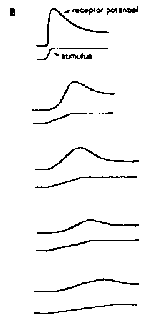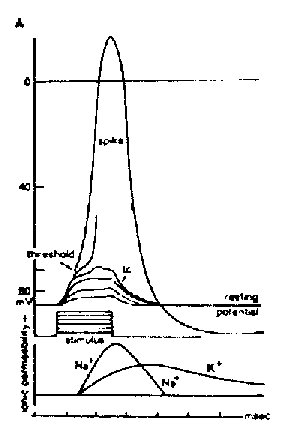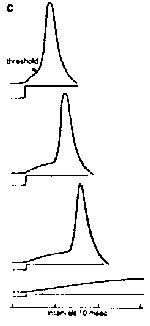

An electrical stimulus, as shown in six increasing strengths, depolarises the membrane to increasing extents.
At a certain degree of depolarization, as indicated by the threshold, the membrane resistance to sodium ions is reduced and further current begins to flow, thus causing the spike.
The upward phase of the spike is caused primarily by the increase in permeability to sodium ions, shown by the Na+ curve below, allowing sodium ions to flow in.
The recovery phase of the spike is caused primarily by
the increase in permeability to potassium ions as shown in curve K+
below, allowing potassium ions to flow out.

B.
Typical graded receptor potentials in response to ramp stimuli of differing steepness.
These curves are from an electrically inexcitable receptor membrane.
The membrane is changing its potential in response to
the energy input in the form of the
appropriate stimulus, e.g. light for a photoreceptor.

C.
Typical graded potentials leading to a spike in an electrically excitable membrane, as in A.
The latency to the initiation of a spike depends on the rate of increase of the prepotential.
These are represented as caused by electrical stimuli, but changes at a nearby receptor or synaptic site have exactly the same effect.